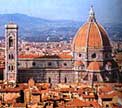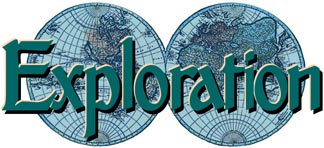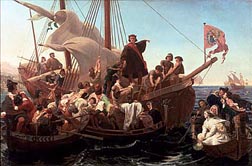
|


|
|
|
Mr. Sedivy's
More Features:
|
Highlands Ranch High School - Mr. Sedivy
Spain Christopher Columbus (1451
- 1506) Christopher Columbus discovered America for Spain in 1492. Columbus thought that he could reach the Indies quicker if he sailed west. The islands that he first reached are still called the West Indies. Although Columbus returned to America three more times, he died believing that the land he had reached was Asia. Columbus made four voyages to the Americas. On his third voyage, he landed on the mainland of South America on the coast of Venezuela. The colony Columbus had founded on Hispanola on his second voyage rebelled. This revolt by the colonists put him in disgrace. He died without regaining his fortune or his prestige, but today his voyages are recognized as being among the most important events in history.
The "Indians" that Columbus discovered smoked "tabac" in cigar-like things through their noses. Caribbean Indians were cannibals - once they ate a priest, but it made them sick, so they never ate religious people again. Lines of Demarcation The Papal Line of Demarcation Treaty of Tordesillas The Spanish Empire in America During the Early 16th-Century, Spain followed up on the discoveries of Columbus. Ponce de Leon
Cortés
Cortés gave the Aztecs gifts so they would be friendly. And, Cortés found that conquering the Aztecs was easy. Spain had gunpowder, steel, and horses. The Aztecs thought the Spaniards might be gods and didn't want to harm them. The Aztecs were susceptible to European diseases (smallpox) that they had no immunity to.
Aztecs were also cruel rulers, and the other Indians were happy to see them taken over. The Spanish were seen by them as liberators.
Pizarro
Coronado (From 1540 - 1542)
Magellan The Name, Amerigo Vespucci (an Italian) was a map maker. During Christopher Columbus' voyages, Amerigo drew the maps. After Gutenberg's invention, the printing press, the vernacular was generally used - things were no longer printed in Latin. During the Renaissance, individualism was an important ideal. So, Amerigo Vespucci signed his map work as one would sign a piece of art. The New World was dubbed "America" due to the fact that the first maps, printed using the printing press and mass produced, attributed the name "Amerigo" to the new land. These maps were mass-produced. After printing, it was too late to change the name (to "Columbia"). Age of Exploration
/ Expansion of Western Europe English and French Explorations Historical Periods of | Prehistory
| Mesopotamia & Phoenicians |
|
Highlands Ranch High School ![]() 9375 South Cresthill Lane
9375 South Cresthill Lane ![]() Highlands Ranch, Colorado 80126
Highlands Ranch, Colorado 80126 ![]() 303-471-7000
303-471-7000
Mr. Sedivy's History Classes
| Colorado History | American
Government | Modern European History | Advanced
Placement European History | Rise of England
| World History |
| Home | Back to top of page |
Site Contents |













